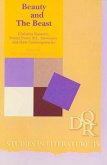This study argues that twentieth-century American women writers' textual representations of female beauty generally recognize a link between beauty standards and aesthetic ideology, exploring female beauty as a symptom of prevailing ideas about art and esthetics. Female beauty, in their texts, is not merely an issue of whether a female character is pretty or not; it is an expression of the controlling discourses negotiated by character, text, and author. In this study, therefore, the women writers' texts are read after interchapters outlining their key cultural and literary contexts. Revising Paul de Man's method of exploring "scenes of reading," this study focuses on "scenes of beauty" in which a character, narrator, or speaker negotiates ideas about beauty. The author pairs Euro-American and African American women writers across the century in three "generations": H.D. and Zora Neale Hurston; Gwendolyn Brooks and Sylvia Plath; and Toni Morrison and Louis Gluck. As such, this study offers a landmark black/white dialogue on female beauty in twentieth-century American culture and literature. "Scenes of beauty" in the texts of these writers suggest multiple feminine aesthetics in twentieth-century American writing, unified in their negotiation of the aesthetic ideologies embodied in female beauty.








